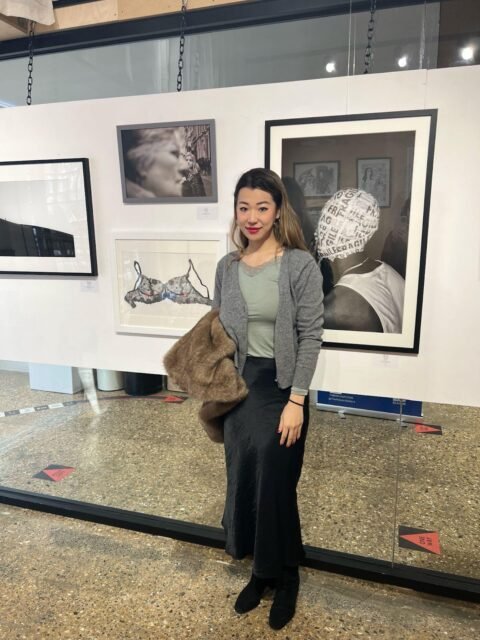Many of us grew up in the era of digital photography, and taking a photo usually means pulling out a camera or smartphone and pressing a button. However, have you ever thought about how people captured images before the advent of digital cameras?
Canadian artist Dianne Bos has spent decades using traditional photographic techniques like pinhole photography, chlorophyll printing and cyanotype to create works of art and installations. By making cameras out of unusual objects such as books, leaves and entire rooms, Bos’s work transcends the limitations of digital photography and explores the themes of light, time, space and beyond.
“I guess what I never bought into was the rigors of buying a camera that already has all, you know, so at that point, you maybe bought a Pentax 35-millimetre camera, and you would have shutter speeds and f-stops,” Bos said as she explained why she was drawn to traditional photography.
“And the format would be already decided, right? You’re using 35-millimetre film. You know, why?” she questioned. “So when I realized I could make my own [pinhole] camera, and I could have multiple apertures, […] I started experimenting with different cameras. The camera was a sculpture, she stated.
Pinhole photography works by having light from an object or scene pass through a small opening onto photographic film inside a light-proof box. Theoretically, any object can be turned into a light-proof box. Here, the camera, or even the process of making the camera can be a work of art in itself.
Bos showed photos of buildings, trees and candles created using hollowed out books and sheets of metal with apertures as pinhole cameras. She also printed images of dried leaves by shielding parts of the leaf with a stencil and exposing it to sunlight, which then bleaches the unshaded parts of the leaf.
Unsurprisingly, traditional photography takes more time and effort than using digital cameras, but that is part of the appeal for artists like Bos. She explained the virtue of being mindful and purposeful when using traditional technologies because they encourage us to pay close attention to our world.
“So I had a book [pinhole camera] on Rome in Italy, and I went around, I could only take one photo a day, which I like. I mean, that’s a challenge I give everybody out there with your phone now. You know, everybody knows you take unlimited pictures because you’re probably trying to get rid of them all the time. How many do you look at again? You know, like very, very few,” she said.
“If I go out with a camera like this, and I’ve spent a lot of time cutting photo paper to go in here, going out with this book [pinhole camera], I’m not just going to take the first thing I see. I’m going to go around, look at what’s happening around it, everything that’s going to affect [it], that really look at the situation at light and hopefully get a good image.”
On Oct. 9, Bos and Sarah Fuller, a sessional instructor at U of M’s school of art, will be hosting a workshop on campus where students can learn how to make their own pinhole cameras by using objects they bring to the workshop. This will be followed by a talk the next day on the history, art and science of photography.
One tip Bos gave to those who want to try pinhole photography for the first time is to “remember that you aren’t faster than the speed of light,” as she humorously puts it, or in other words, make sure no light can enter the lightproof box at any point during the photographic process.
Learn more about the upcoming workshop and talk by visiting umanitoba.ca/art/event-artist-talk-and-workshop-dianne-bos.




